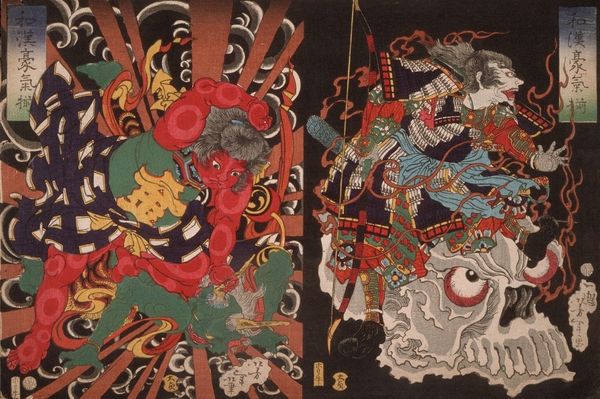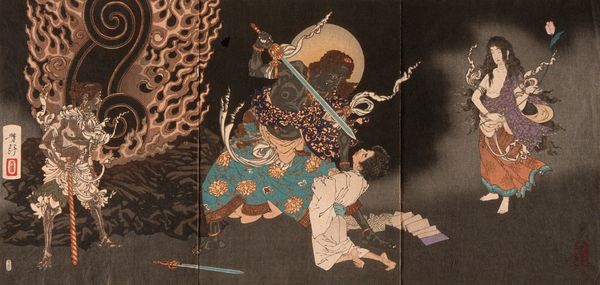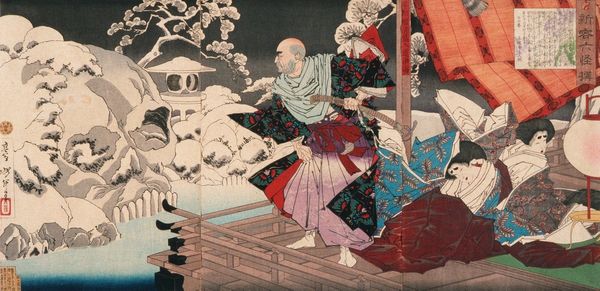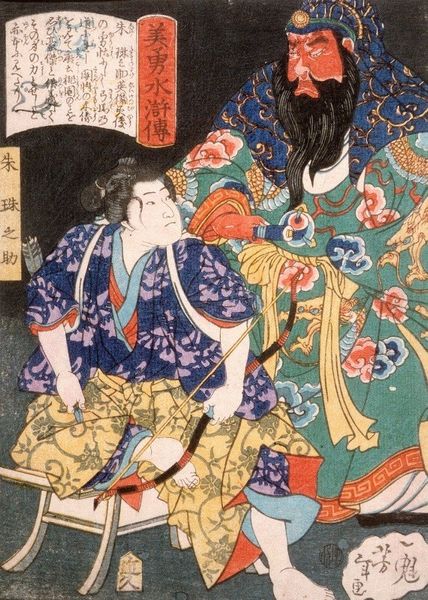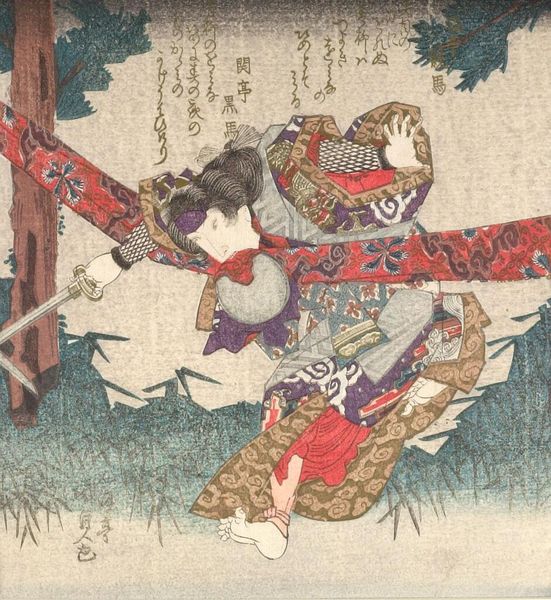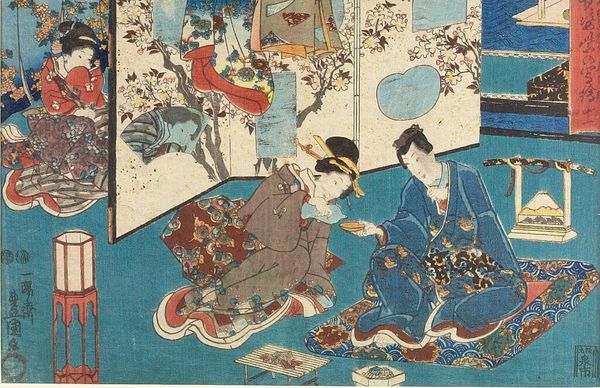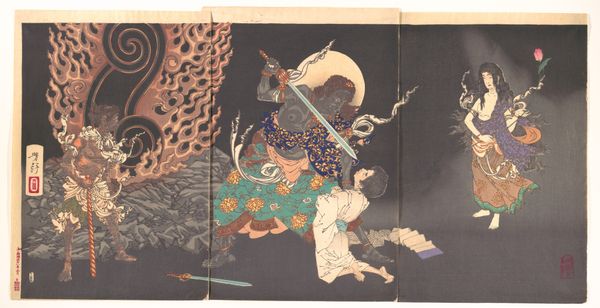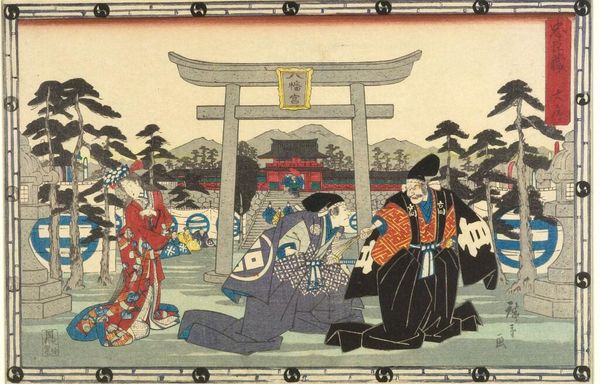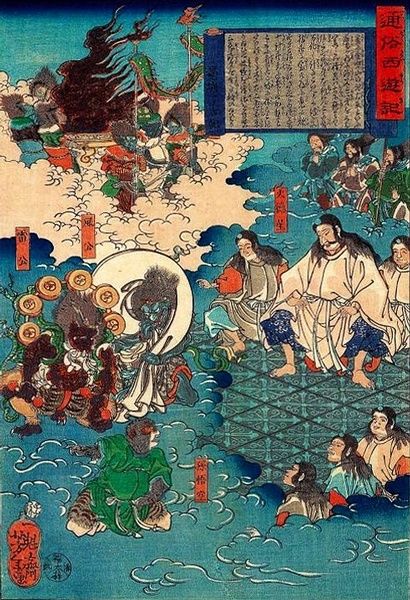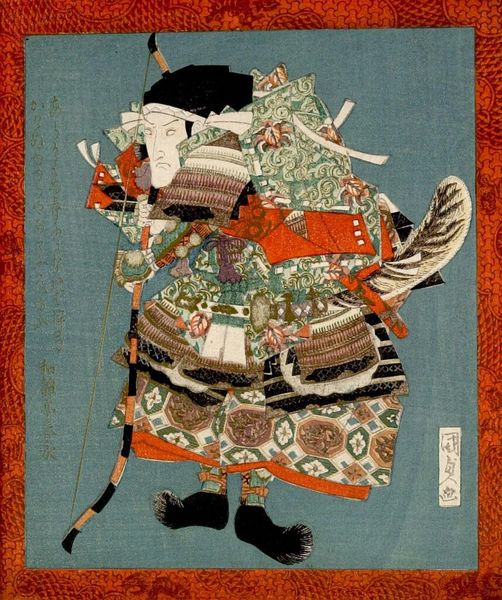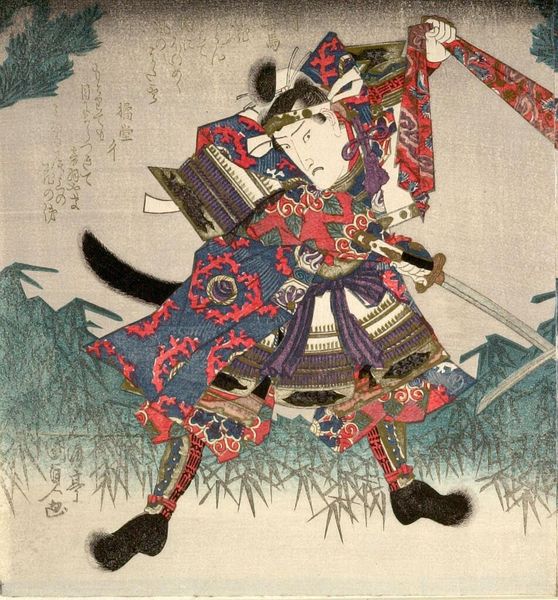
print, woodblock-print
#
water colours
#
narrative-art
# print
#
asian-art
#
landscape
#
ukiyo-e
#
figuration
#
woodblock-print
#
history-painting
Copyright: Public Domain: Artvee
Curator: What a turbulent scene! Like a still from a kabuki play in the rain. Editor: Exactly. This is Tsukioka Yoshitoshi's "Clearing Weather on the Togakushi Mountains; Taira no Koremori Ason" created in 1868, a woodblock print triptych, so it reads from right to left, revealing an elaborate tale of flight and possibly defeat. Curator: The colors grab me. A subdued palette, almost monochrome, but bursting with touches of vibrant reds in the scattered maple leaves that feel almost ominous against the tranquil mountain backdrop. They guide our eye. And then that giant drum with the monkey perched on top... such an uncanny detail! What is the resonance of the drum and why that peculiar monkey presence? Editor: Well, that is definitely the iconic Yokai, the Drumming Monkey, who in Japanese folklore is known to bring misfortunes to those that hear his music. In terms of its relationship to the story being presented by Yoshitoshi, this image recalls a very specific narrative moment from the Heike Monogatari. Taira no Koremori flees to the mountains of Togakushi after defeat, encountering terrifying visions and succumbing to despair. These elements symbolize Koremori’s inner turmoil and foreshadow his tragic end. Curator: And look how Koremori is depicted. Almost fragmented. His pose conveys utter defeat and resignation as he draws his sword as if confronting certain doom, or maybe suicide, with the final figure collapsed beneath. His beautiful brocade fabrics offer a poignant juxtaposition against the violent chaos. It’s a fascinating study of historical, spiritual, and emotional torment all interwoven. Editor: Right, and the surrounding iconography speaks volumes too. For example, the presence of the floating lanterns are symbolic reminders of Koremori’s noble lineage in the court that he no longer has access to in these desolate conditions. The print not only showcases the landscape as a witness but turns it into an active participant in the drama. A harbinger of both literal and internal 'clearing weather'. Curator: Yes, indeed. In closing, for me, Yoshitoshi masterfully encapsulates not just a historical event, but also a profound sense of personal devastation, reflecting enduring themes of fate, resilience, and the weight of history. Editor: A dramatic snapshot, steeped in symbolism, leaving us contemplating how cultural narratives echo across centuries. The ability of folk traditions, like those of Yokai, continue to find life in contemporary prints speaks to the vitality of oral histories in artistic forms.
Comments
No comments
Be the first to comment and join the conversation on the ultimate creative platform.

